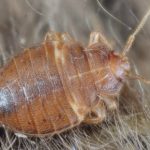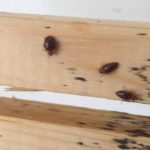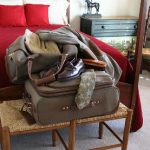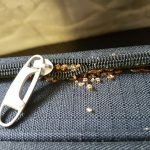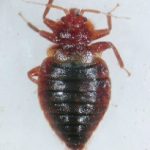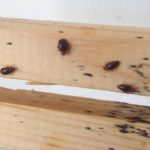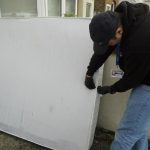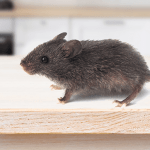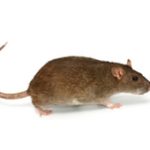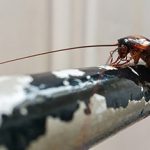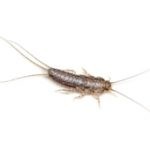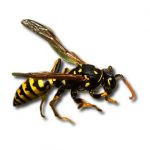Bed Bugs On Mattress – What To Do Now?
Finding bed bugs in your mattress is never a pleasant surprise. These tiny pests love to hide in the seams and corners of your bed, only coming out at night for a blood meal! Spotting the signs early can save you a lot of hassle before things get out of hand.
Why Do Bed Bugs Get On the Mattress?
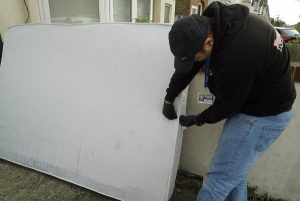 The simple answer to this question is — because they like to live near their hosts. After bed bugs enter your home, they find the place you spend the most time at. Which is your bed, at night.
The simple answer to this question is — because they like to live near their hosts. After bed bugs enter your home, they find the place you spend the most time at. Which is your bed, at night.
One or two – bed bugs can burrow inside of your mattress and come out at night to feed on you, every ten days. But when one lays eggs and they hatch, their number grows, and they will spread out in other places of your room, and cause an infestation.
How Do Bed Bugs Get On the Mattress?
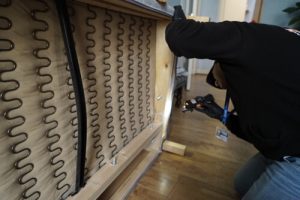 Well, bed bugs can’t fly or jump, they crawl to your bed. Bed bugs are drawn to carbon dioxide and that’s how they find you. When you sleep at night, you don’t move a lot, and the carbon dioxide that you breath out forms a cloud over your bed. Thus, the bed bugs know that there’s food there and crawl to your bed.
Well, bed bugs can’t fly or jump, they crawl to your bed. Bed bugs are drawn to carbon dioxide and that’s how they find you. When you sleep at night, you don’t move a lot, and the carbon dioxide that you breath out forms a cloud over your bed. Thus, the bed bugs know that there’s food there and crawl to your bed.
Learn more about where do bed bugs come from
How To Check the Mattress and Bed Area for Bed Bug Signs
You will need a pair of medical gloves, a flashlight and something flat and stiff, like a credit card, scraper, hard paper.
First, inspect your bed linen because you may spot bloodstains on the sheets. Then strip the mattress and using the flashlight start checking it carefully.
Signs of bed bugs on the mattress to look for:
- Red stains may be visible on the mattress, too.
- Excrements from bed bugs, which look like small dark spots, you can try and scrape them off with the flat object.
- Tiny white eggshells or yellow skin shed from the nymphs.
- Actual bugs.
Check for more signs of bed bugs
How to detect bed bugs on a mattress:
- Cordings of the mattress on both sides, especially the corners.
- Under the mattress tag; some old mattresses have buttons, check them too.
- Check the box springs: remove the dust cover and inspect the inside of the box springs.
- Inspect small cracks where pieces of wood or plastic (the material your bed frame is made of) do not fit well together and leave some space. The headboard and hanging pictures, too.
- Check the folds, seams, and tufts of your mattress and box springs, where the fabric is stapled to the wood.
Read more about how to check for bed bugs
What to Do in Case the Mattress Is Infested?
Bed bugs infestation is one of the hardest problems to deal with, even to professional pest exterminators. There are some things you can do on your own to treat your mattress and get it free from bed bugs. However, you are more likely to only slow down the growth of the infestation and not to eradicate the problem completely.
Throwing the Mattress?
You don’t have to. It won’t make the problem disappear. Even though many people think that getting rid of their mattress means getting rid of the bed bugs as well – they are wrong. Don’t you be fooled by the name “bed bugs” too, and think they are only found in your bed. They can be in wall crevices, on the carpet, sofas or couches, behind picture frames or nightstands, near the wardrobe.
You can get an active bed bug infestation even after throwing your mattress away. Bed bugs can lay about 20 eggs a day and it only takes them a couple of days to hatch.
Getting rid of it will only cost you money. A new mattress will get infested soon afterwards if you don’t treat the area.
Furthermore, after getting rid of your mattress you’ll have to sleep in another room until you buy a new one. Don’t! That’s a great way to spread the bed bug infestation in the rest of your home. They can hitchhike on you or your bedding and move to another room where they will begin feeding and reproducing, and cause an infestation.
Or Keeping the Mattress?
Sometimes the infestation can get massive before you discover it and begin treatment. In those cases, if the mattress is incurable it should be thrown away. If that’s the case with you, you have to make sure you are not breaking any laws, check the waste regulations.
What You Can Do
– You can call a junk removal service and hire people to dispose of it.
– If you are allowed to leave your mattress on the curb, make sure you make clear that the mattress is not to be taken by a person.
– Encase the mattress in a strong plastic cover to stop the bed bugs from spreading once your mattress is outside. They can move to your neighbours or get on people passing by.
– If you deem it necessary, leave a note saying that the mattress is infested and must be thrown away.
Check also: Most Common Questions About Bed Bugs
How to Get Rid of Bed Bugs in a Mattress?
If you’ve been sleeping with bed bugs, don’t panic – there are steps you can take to get rid of them. The key is to act fast to stop the infestation from spreading.
Clean your bed
Clean your bed linen, place pillowcases, sheets, other covers, duvets, in a garbage bag and seal it tightly. Carry them to the washing machine. Use the highest temperature that is suitable for the fabrics you are washing. If you own a dryer, use it too. Bed bugs and their eggs die at high temperatures.
Use heat
Heating up the mattress is a successful way to rid it of bed bugs and their eggs. You can borrow, rent or buy a heat steam cleaner and attempt to drive the bed bugs off the mattress on your own. If the machine can reach up to the high temperatures necessary for bed bug treatment, you might even be able to kill the eggs as well. This method is slow and requires a lot of your time and patience to go over every centimetre of the mattress. However, if you decide to use a professional bed bugs heat treatment for your home, the mattress will be treated along with other affected areas and items in the room.
Check also: How to prepare for bed bug heat treatment
Vacuum the bed bugs
Some people believe that vacuuming the bed bugs kills them. Not true! Vacuuming the bed bugs won’t kill them, it just collects them inside of your vacuum machine. You will only decrease their population for a period of time. If no adequate treatment is applied, the infestation can rapidly grow again. You will need to remove the vacuum bag and seal it in a plastic bag and dispose of it in a container outside of your home.
Professional control
The fact that you’ve found bed bugs only on your mattress doesn’t mean they aren’t hiding in other places in the room. Washing the bed linen on high degrees, heating up the mattress and vacuuming are just temporary measures. To get rid of bed bugs once and for all, you’ll need effective bed bugs treatment done by professionals with the right chemicals.
Check also: How to Get Rid of Bed Bugs
Having a bed bug infestation?
Contact us and get the issue resolved by professional exterminator.
How Long After Bed Bug Treatment Can I Sleep in My Bed?
The method used will determine how soon you can sleep in your bed following a bed bug treatment. Should chemical treatments be utilised, it is normally advisable to wait four to six hours before returning to the bedroom. To get rid of any residual chemicals or dead bugs, you might also have to clean your bedding and give your mattress a decent hoover. For the best results, be mindful to follow the specific instructions your pest control professional advises.
If heat is applied to your house, you’re lucky; normally, you can sleep straight away as no chemicals are involved. Heat treatments eliminate bed bugs at all levels, hence once things have cooled down your bed should be bug-free and safe to use. Think about using a bed bug-proof mattress cover and look for any indicators of a re-infestation to help them stay away.
Solutions That Don’t Work
Diatomaceous earth
Diatomaceous Earth is a DIY method often listed as an effective one. However, it has been proven already that DE actually does nothing to eliminate bed bugs.
Acids
Silica gel, boric acid – both are similar in usage and in expected results. Silica gel is said to be more effective than boric acid, but it is not a way to get rid of bed bugs infestation alone.
Rubbing alcohol
Rubbing alcohol can be used to kill bed bugs. However, the problem is that it needs to be used in big quantities in order to work on your mattress or bed area. This will make everything around the bed highly flammable and put your home at risk of fire.
Bug bombs and other pesticides
Pesticides and bug bombs sold in stores aren’t as effective as you may think. The majority of products sold to you to treat bugs are not nearly as strong as they should be. This makes them ineffective and you’re just wasting your time and risk spreading the bugs in more areas of your home. Using a mild pesticide will scare them off in a different direction and they will seek shelter in other rooms or pieces of furniture.
Encasing the mattress
Encasement of the mattress and box springs. This is done with the end goal to starve and kill the bed bugs, some products may help speed up the process. It will also take a very long time, and it still doesn’t guarantee the extermination of bed bugs and their eggs.
How To Prevent Bed Bug Infestation
You can pick up bed bugs from anywhere if you are not being careful. Even luxurious hotels are not bed bugs-free zones, neither are motels, taxis or aeroplanes, hospitals, buses, etc.
Some DIY methods and postponing the professional help may result in an infestation that is too big and you have to get rid of your carpets or furniture.
If your own methods of preventing and dealing with bed bugs don’t prove to be effective, do not waste much time before calling the professionals.
Inspect your hotel room
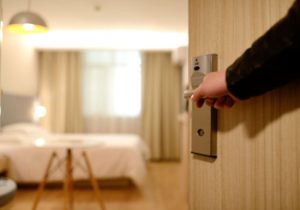
Leave your bags in the bathroom- this is the safest place where no bed bug can be found. Inspect the room – the bed, the bed area, upholstered furniture. Look for dark spots – their faeces, shed skin or eggshells, around the bed.
Inspect your luggage

When you come home leave your luggage in the bathroom again, or outside. After travelling, pack your clothes in sealed plastic bags and launder and dry them right away when you get home.
Inspect new clothes

Take a thorough look at them and wash them before wearing them. You never know who has tried them on before you.
Inspect used furniture
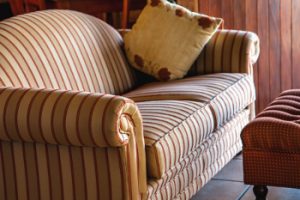
Never bring in second-hand furniture in your home before inspecting it or disinfecting it.
Keep luggage safe
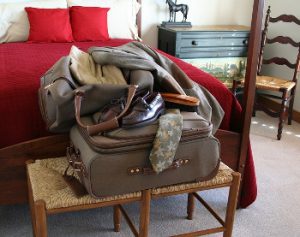
When travelling never leave your luggage on the ground or on upholstered pieces of furniture. Bed bugs can be hiding anywhere and will quickly latch onto your luggage.
Check also: How to Protect Your Luggage From Bed bugs While Travelling?
Declutter

Keep your home clutter-free. It provides less hiding places for bed bugs, and even if you ever get some in your home, it will make it easier to spot them and treat them.
Trust your instincts
If you have a feeling that something is not right, you get itchy spots on your body, or have noticed any of the other signs of bed bugs, do not go to sleep in another room. Bed bugs will find you and the infestation will spread.
Found some bed bugs on your mattress?
We provide helpful information according to the expertise and knowledge of the pest technicians. However, we don’t provide any medical advice and cannot guarantee that the mentioned will be valid for you.



